Alexander Luce
Investigation of inverse design of multilayer thin-films with conditional invertible Neural Networks
Oct 10, 2022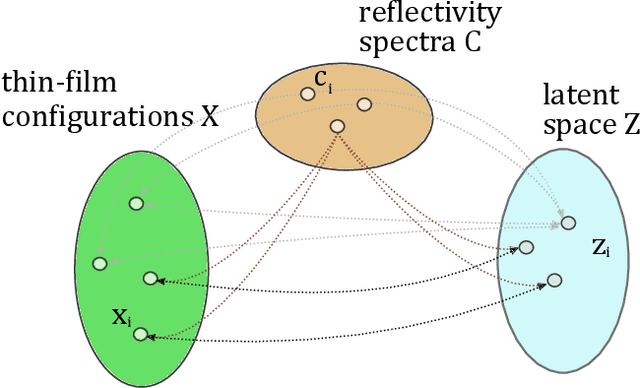
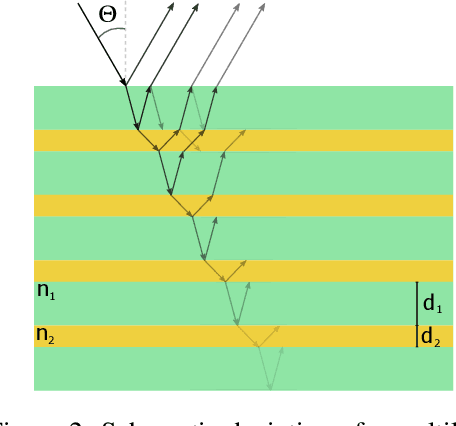
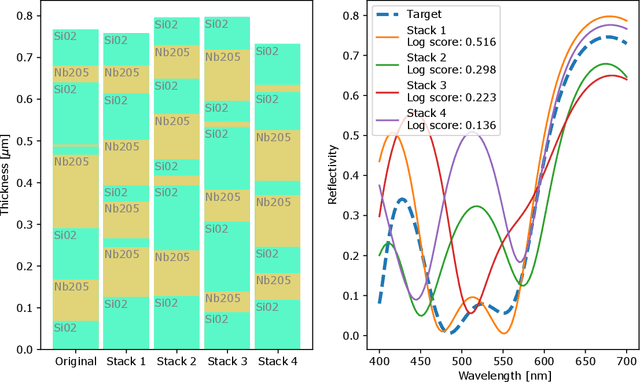
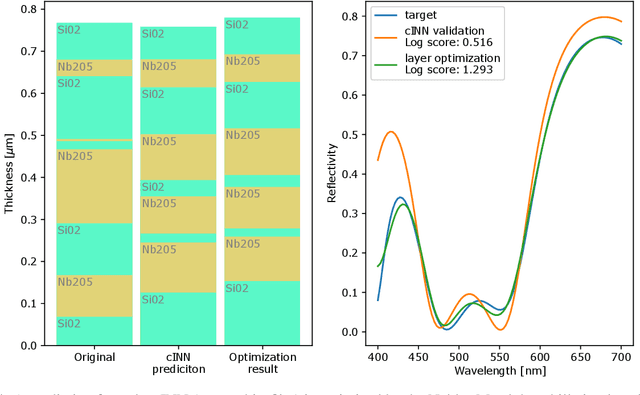
Abstract:The task of designing optical multilayer thin-films regarding a given target is currently solved using gradient-based optimization in conjunction with methods that can introduce additional thin-film layers. Recently, Deep Learning and Reinforcement Learning have been been introduced to the task of designing thin-films with great success, however a trained network is usually only able to become proficient for a single target and must be retrained if the optical targets are varied. In this work, we apply conditional Invertible Neural Networks (cINN) to inversely designing multilayer thin-films given an optical target. Since the cINN learns the energy landscape of all thin-film configurations within the training dataset, we show that cINNs can generate a stochastic ensemble of proposals for thin-film configurations that that are reasonably close to the desired target depending only on random variables. By refining the proposed configurations further by a local optimization, we show that the generated thin-films reach the target with significantly greater precision than comparable state-of-the art approaches. Furthermore, we tested the generative capabilities on samples which are outside the training data distribution and found that the cINN was able to predict thin-films for out-of-distribution targets, too. The results suggest that in order to improve the generative design of thin-films, it is instructive to use established and new machine learning methods in conjunction in order to obtain the most favorable results.
Playing Ping Pong with Light: Directional Emission of White Light
Nov 30, 2021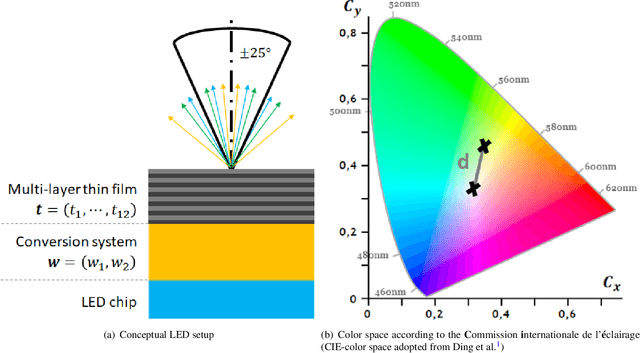

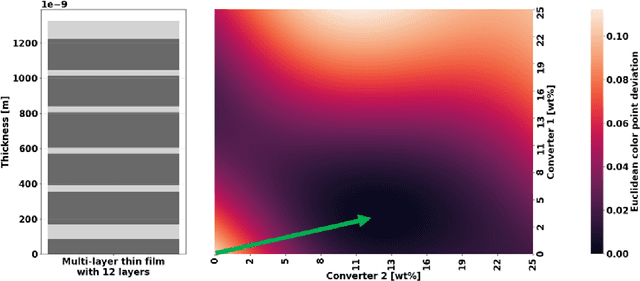

Abstract:Over the last decades, light-emitting diodes (LED) have replaced common light bulbs in almost every application, from flashlights in smartphones to automotive headlights. Illuminating nightly streets requires LEDs to emit a light spectrum that is perceived as pure white by the human eye. The power associated with such a white light spectrum is not only distributed over the contributing wavelengths but also over the angles of vision. For many applications, the usable light rays are required to exit the LED in forward direction, namely under small angles to the perpendicular. In this work, we demonstrate that a specifically designed multi-layer thin film on top of a white LED increases the power of pure white light emitted in forward direction. Therefore, the deduced multi-objective optimization problem is reformulated via a real-valued physics-guided objective function that represents the hierarchical structure of our engineering problem. Variants of Bayesian optimization are employed to maximize this non-deterministic objective function based on ray tracing simulations. Eventually, the investigation of optical properties of suitable multi-layer thin films allowed to identify the mechanism behind the increased directionality of white light: angle and wavelength selective filtering causes the multi-layer thin film to play ping pong with rays of light.
TMM-Fast: A Transfer Matrix Computation Package for Multilayer Thin-Film Optimization
Nov 24, 2021

Abstract:Achieving the desired optical response from a multilayer thin-film structure over a broad range of wavelengths and angles of incidence can be challenging. An advanced thin-film structure can consist of multiple materials with different thicknesses and numerous layers. Design and optimization of complex thin-film structures with multiple variables is a computationally heavy problem that is still under active research. To enable fast and easy experimentation with new optimization techniques, we propose the Python package TMM-Fast which enables parallelized computation of reflection and transmission of light at different angles of incidence and wavelengths through the multilayer thin-film. By decreasing computational time, generating datasets for machine learning becomes feasible and evolutionary optimization can be used effectively. Additionally, the sub-package TMM-Torch allows to directly compute analytical gradients for local optimization by using PyTorch Autograd functionality. Finally, an OpenAi Gym environment is presented which allows the user to train reinforcement learning agents on the problem of finding multilayer thin-film configurations.
 Add to Chrome
Add to Chrome Add to Firefox
Add to Firefox Add to Edge
Add to Edge